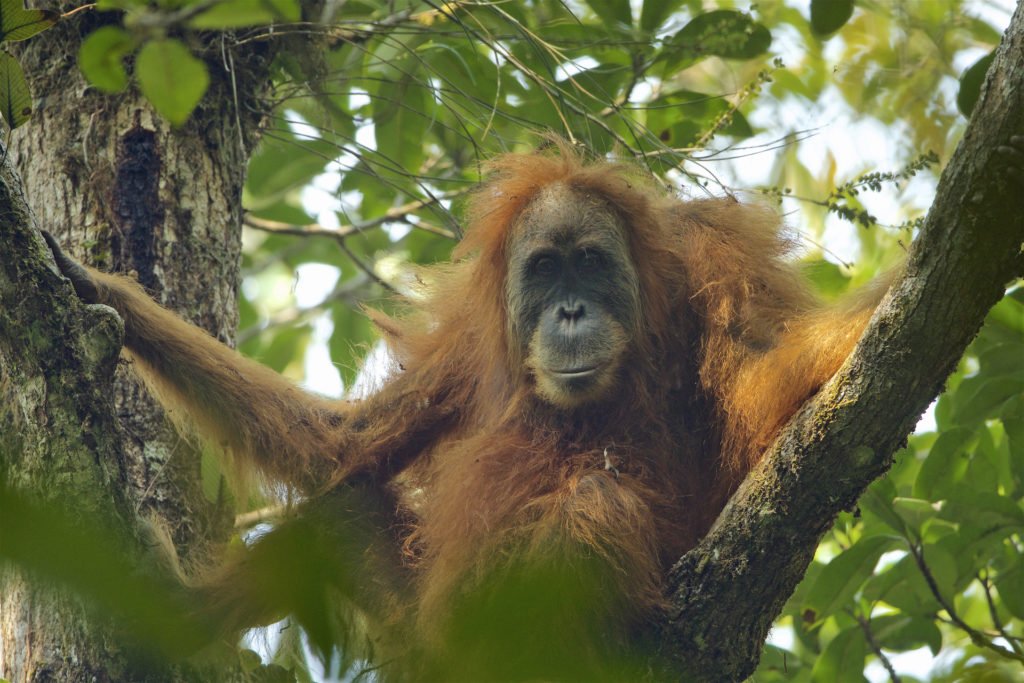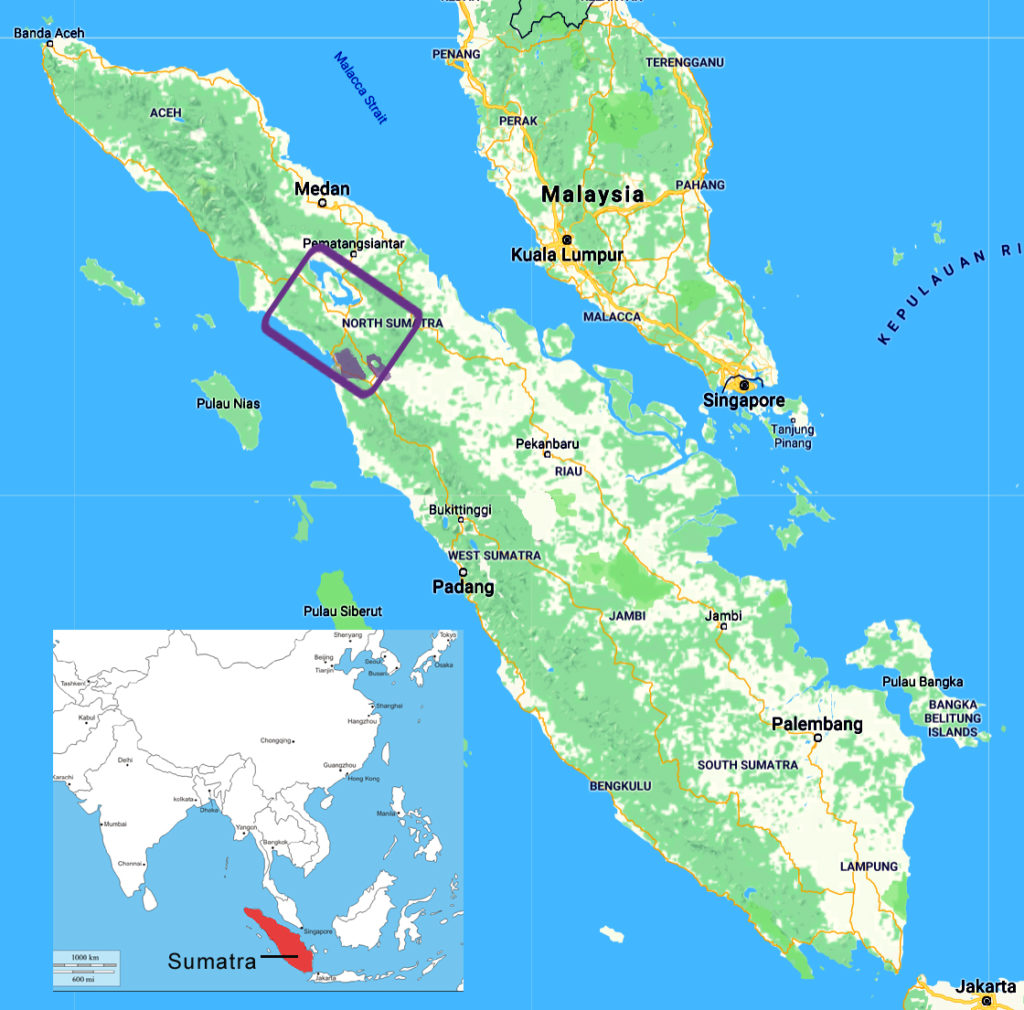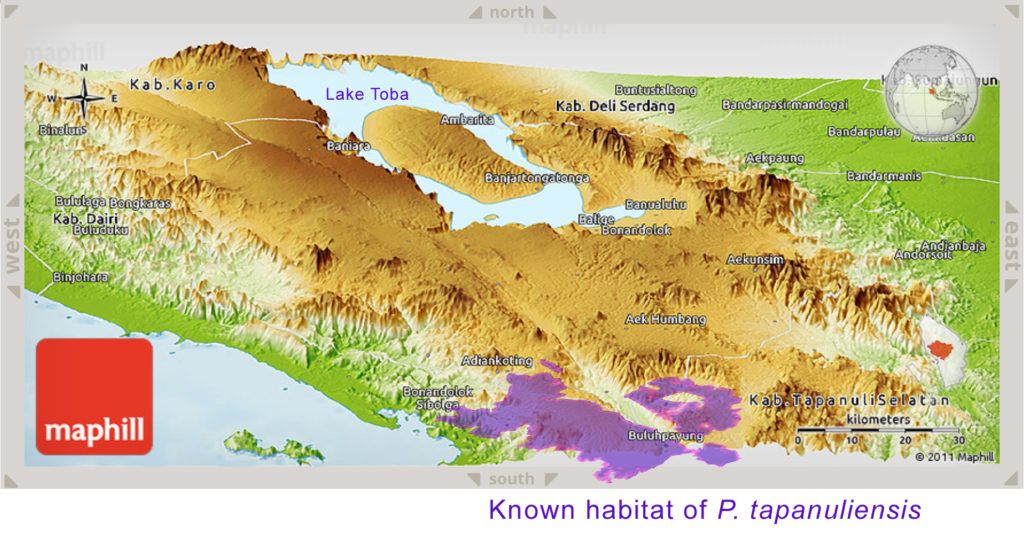Pongo tapanuliensis declared separate species of Orangutan
First encountered in 1997, it joins Humans, Gorillas, Chimpanzees, Bonobos, and the other Orangutans as true Great Apes
There was much to hoot about at the end of 2017, at least if you are among the orangutans hidden deep in the forests of Tapanuli, in Northern Sumatra, as they have been declared a new species of Great Ape in scientific paper “Morphometric, Behavioral, and Genomic Evidence for a New Orangutan Species,” published in the November 20 issue of Current Biology. And that declaration was based partly on the animals enormous hooting calls, which can be heard for many miles.
 This is the first new species in almost a century to become a member of the exclusive evolutionary club that includes us Homo sapiens. The bonobo, a close evolutionary cousin of the chimpanzee was identified in 1929. In addition it unique vocalizations, the species has genetic differences, and differences in the shape of its skull and teeth spacing from the other two orangs, the Bornean orangutan (P. pygmaeus, with three subspecies) and the Sumatran orangutan (P. abelii,) which were themselves declared separate species in 1996.
This is the first new species in almost a century to become a member of the exclusive evolutionary club that includes us Homo sapiens. The bonobo, a close evolutionary cousin of the chimpanzee was identified in 1929. In addition it unique vocalizations, the species has genetic differences, and differences in the shape of its skull and teeth spacing from the other two orangs, the Bornean orangutan (P. pygmaeus, with three subspecies) and the Sumatran orangutan (P. abelii,) which were themselves declared separate species in 1996.
Photo: T. Laman
The bad news is, the scant 800 known members of this new species of orang are already among the most endangered species on earth. They reside in a small area of Northern Sumatra, with habitat already under siege by the industrious progress of mankind, about to build a dam and roads that could devastate this delicate ecosystem.
It is hoped these shy, gentle creatures will be championed by humans with the foresight to keep them from vanishing just as we come to know them better.
 |
 |
3D Map Courtesy of: Physical Panoramic Map of Kab. Tapanuli Utara (with my habitat overlay)
Highlights of the paper and the start of its summery include:
* We describe a new species of great apes, the Tapanuli orangutan Pongo tapanuliensis
*Genomic analyses corroborate morphological distinctiveness of P. tapanuliensis
* P. tapanuliensis comprises the oldest evolutionary lineage in the genus Pongo
* With fewer than 800 individuals, P. tapanuliensis is among the most endangered great apes
Summary
Six extant species of non-human great apes are currently recognized: Sumatran and Bornean orangutans, eastern and western gorillas, and chimpanzees and bonobos. However, large gaps remain in our knowledge of fine-scale variation in hominoid morphology, behavior, and genetics, and aspects of great ape taxonomy remain in flux. This is particularly true for orangutans (genus: Pongo), the only Asian great apes and phylogenetically our most distant relatives among extant hominids.
The paper may be acquired at Cell.com.
http://www.cell.com/current-biology/fulltext/S0960-9822(17)31245-9
Other reading: